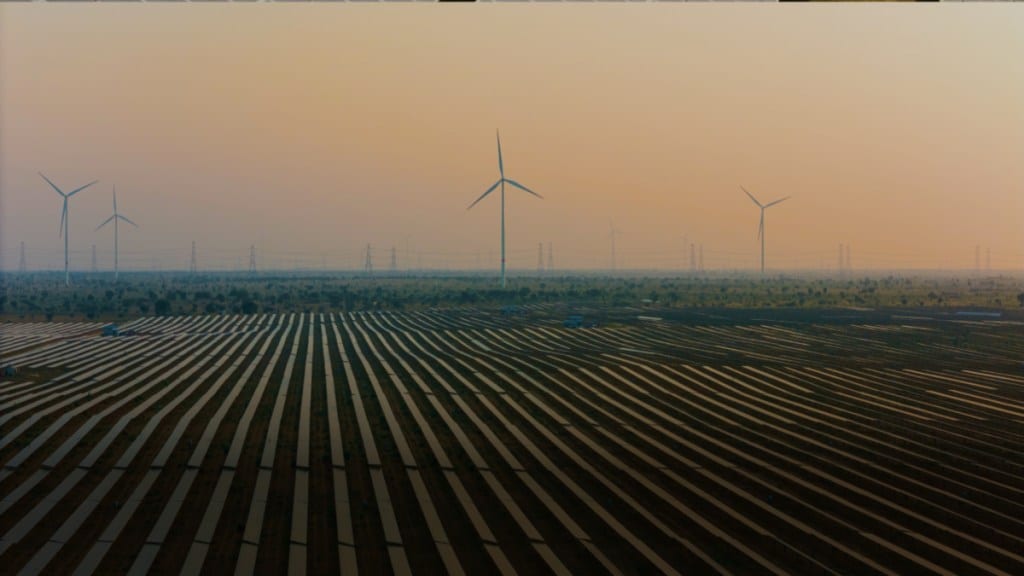An activist investment firm, Snowcap Advisors analysed Adani Green Energy and raised five key concern areas. In its presentation, Snowcap outlined five key findings: inflated run-rate EBITDA, declining project returns, 50GW funding concerns, mixed operational performance and related party merchant power sales.
Inflated Run-rate EBITDA
The research firm while analysing this point said that the company points investors towards “self-reported” run-rate EBITDA. The problem appears to be that Adani Green adds back “other income” to its run-rate EBITDA, which includes interest earned on loans, one-off late payment surcharge, and non-cash accounting gains. “we believe it is nonsense to include one-off items and non-cash accounting gains in a “run-rate” metric,” said Snowcap Advisors. The company’s run-rate EBITDA also appears to have been buoyed by aggressive load factor estimates and high short-term power prices. Based on disclosed project tariffs for individual projects, Snowcap Advisors estimates the company’s run-rate EBITDA as of March 2024 is as much as 14-19% lower than reported.
Declining Project Returns
The company claims that it is able to earn attractive returns on its projects above those of its competitors and as high as 17%. Adjusting for accounting gimmicks, Snowcap estimates that AGEL has achieved an average 11-12% Return on Capital (RoC) on projects completed in the past 3 years. For context, Adani Green’s cost of debt is 9.5%. The company’s lacklustre RoC has largely been obscured by its rapid growth, aggressive run-rate EBITDA projections, and infirm revenue accounting which has flattered capex numbers.
50GW Funding Concerns
The Adani Group company claimed that it will grow its capacity nearly five-fold to 50GW by 2030 and that this growth is “fully funded”. However, Adani Green has produced limited free cash flow in recent periods due to its high debt servicing burden and falling project returns. “By our own modelling, we estimate Adani Green can meet just 50% of its 50GW target funding requirement by 2030 – even with the announced equity injection from promoters,” said Snowcap. Adani Green has a history of claiming that its pipeline is fully funded, only to raise more capital. To date, the company has built less than 50% of its 2025 capacity target.
Mixed Operational Performance
Adani Green claimed that its operational projects have “consistently outperformed”. However, footnotes reveal that Adani Green’s key RG1 assets missed even their most conservative generation forecasts, causing AGEL to revise these downwards. Supposed EBITDA outperformance of key bond subsidiaries has been driven mostly by growing related party interest income. Official power generation data from the Indian government appears to show that the company’s flagship hybrid portfolio has not met its minimum CUF target of 50%.
Related Party Merchant Power Sales
Snowcap Advisors believes that Adani Green is less upfront about its dependence on related Adani entities for these sales. In FY23, disclosures in Adani Green’s annual report revealed that 81% of the company’s infirm revenues (the bulk of its merchant power sales in the year) were to Adani Enterprises and Adani Energy Solutions. Adani Green has sold a growing proportion of its power in the open market and tells investors that it expects this to form a meaningful part of its strategy in the coming years. Historically, Indian renewable developers have avoided taking merchant exposure due to low trading volumes and power price uncertainty. Amidst high short-term power prices, Adani Green has been able to achieve upwards of 2x its PPA prices for these merchant power sales. As a result, they have made an outsized contribution to the company’s EBITDA and cash flow generation.
That said, the research firm said it does not hold any kind of position in Adani Green’s securities, related derivatives, or those of other Adani Group companies with 10.9 GW of operating capacity, Adani Green is the largest owner of renewable energy power in India. Adani Green believes that it can achieve exceptional unlevered returns on its renewable projects as high as 17% and it increase its capacity nearly five-fold by 2023 without having to raise equity.

